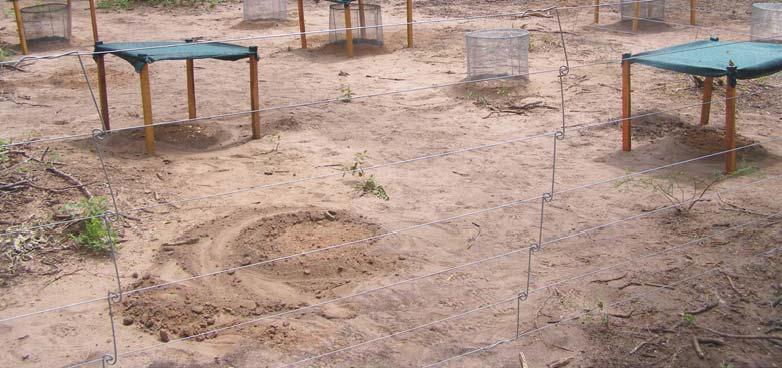Andres Talamo
A project to assess the impact on the Argentinean Chaco Forest of two different methods of logging.

The corner of a livesock exclosure, showing 7 strand fence and shade cloth for shade.
Analyzing a cactus species locally called "ucle" (Cereus validus, Cactaceae). Copo National Park, Semiarid Chaco Forest, Santiago del Estero Province, Argentina.
The Chaco is a vulnerable ecoregion and is of the highest conservation priority at a regional scale. However, almost every area has been altered by human activities. Logging is one of the most frequent and widespread sources of disturbance in the Chaco. Wood is extracted through two logging systems: selective (timber, railway ties, posts) and integral logging (firewood, charcoal).
Little is known about the impact of these two methods on the forest’s plant communities. The project will assess the immediate and short term (3-5 year) impacts of the two logging systems on the regeneration and diversity of Chaco forest.